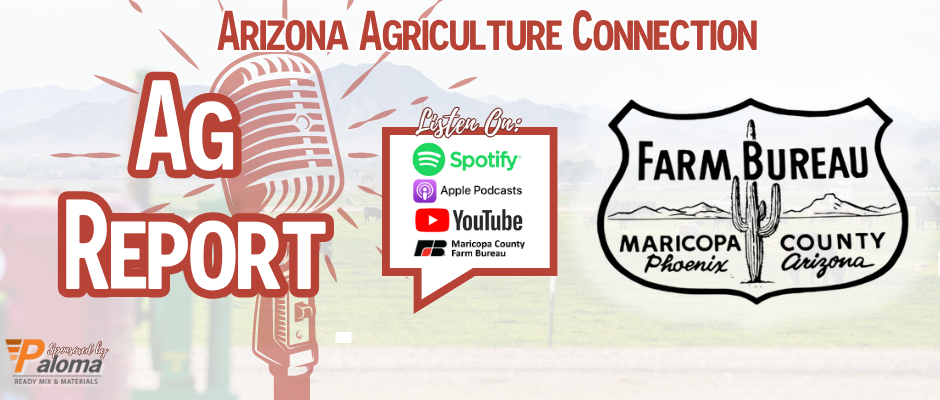Arizona Agriculture Connection-What are Irrigation Districts and Why Do They Matter?
- Nicole Clements

- Jul 30
- 2 min read
Navigating the Complex Waters of Arizona's Irrigation and Water Management
Water is the lifeblood of agriculture, and in Arizona—a state defined by its arid landscapes—its importance is unmatched. The latest episode of the Arizona Agriculture Connection podcast dives deep into this crucial topic. Hosted by Nicole Clements, the episode features insightful conversations with Noel Carter, the General Manager of the Buckeye Water Conservation and Drainage District, and Stan Barnes, the President of Copper State Consulting Group. Let’s unpack the complexities of water management in Arizona, the impact of legislative changes, and the foreseen transformation of agricultural lands.
The Historical Roots and Roles of Irrigation Districts
Irrigation districts have long played a pivotal role in Arizona's agricultural framework. They were essentially formed to manage water resources collectively, ensuring that landowners and farmers could collaborate towards common goals. Such structures have facilitated the sustainable use of water resources, a practice that began over a century ago and continues to evolve to meet today’s challenges.
Noel Carter explained that irrigation districts, like Buckeye's, primarily serve to manage the distribution and scheduling of water for agricultural and residential use. These districts also maintain the crucial infrastructure needed to keep the water flowing efficiently.
Understanding Water in Arizona
Arizona's water story extends beyond just irrigation districts. The discussion highlighted the diversity of Arizona's water sources—groundwater, surface water from the Colorado River, CAP water, and even effluent water. These sources collectively contribute to what is often referred to as “wet water” or the actual physical water available for use, as opposed to “paper water,” which exists only in legal terms.
Navigating Legislative Actions and Growth Pressures
Focusing on recent legislative actions which aim to facilitate urban development while balancing the historical agricultural interests. The introduction of measures like the Ag to Urban bill allows for a smoother transition of agricultural lands into urban developments, promoting water conservation collaboratively with the future of water for our growing areas.
As Stan elaborated, these legislative breakthroughs provide a framework for cities like Buckeye to secure a designated water supply within particular district boundaries for future growth. This legislative foresight ensures that cities can plan and develop responsibly, accommodating the swelling population influx without compromising existing water allocations.
Impact of Changing Dynamics on Agriculture
The conversation didn’t shy away from addressing the inevitable transformation of Arizona’s agriculture due to urbanization. As Stan and Noel noted, many farming families, steeped in generations of agricultural history, face the bittersweet reality of change as their lands evolve from agricultural strongholds to bustling urban areas. Both acknowledged the complex emotions tied to this transformation, underscoring the cultural and historical significance of agriculture in the region.
"A farmer is a God-appointed steward of the land." -Noel Carter
Looking Forward: Cooperation and Innovation
The episode wrapped up with a nod to the cooperation between various stakeholders—cities, irrigation districts, legislators, and the agricultural community—to navigate the evolving landscape. This spirit of collaboration is essential in mitigating water challenges brought on by long-standing droughts and supporting sustainable development.
Sometimes we need a reminder of the intricate network of water management in Arizona, showcasing both challenges and progress. As Arizona continues to grow and urbanize, the lessons from its agricultural past combined with innovative legislative solutions provide a roadmap for sustainable water and land management in the future.





Comments